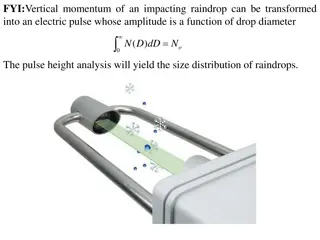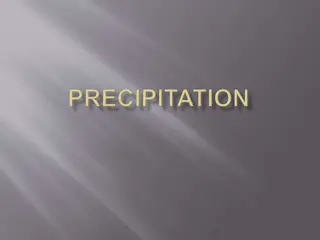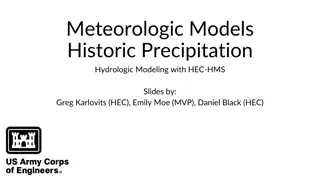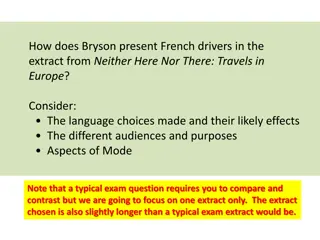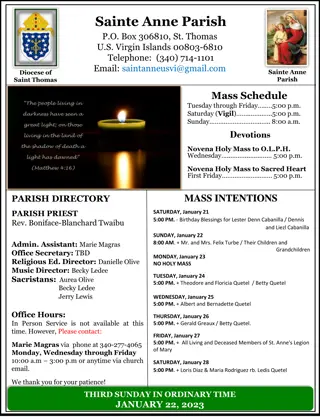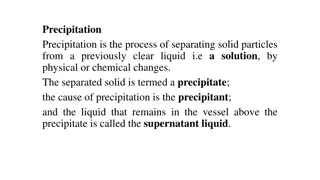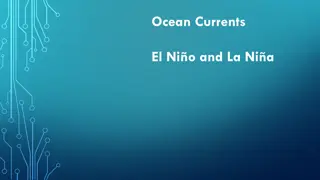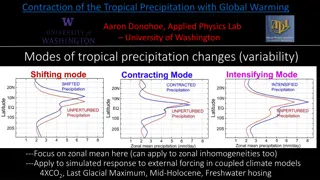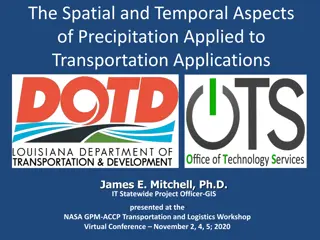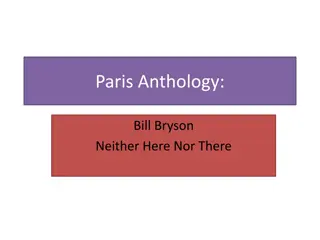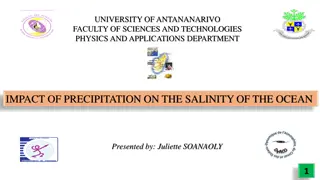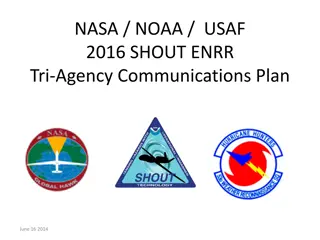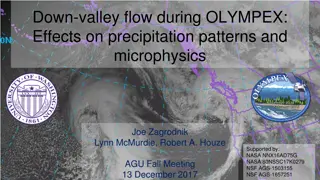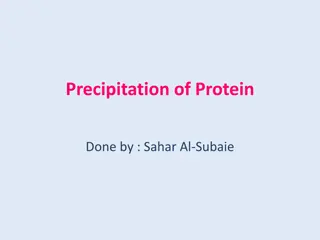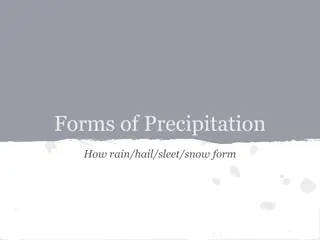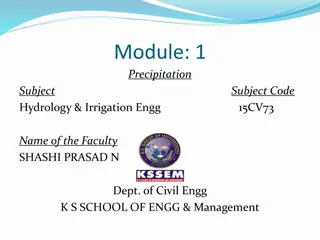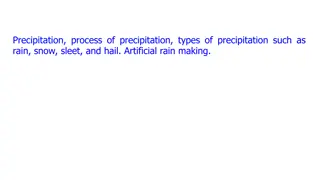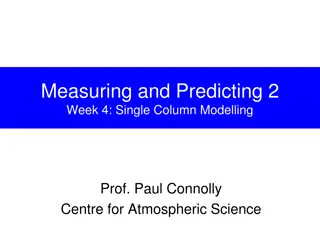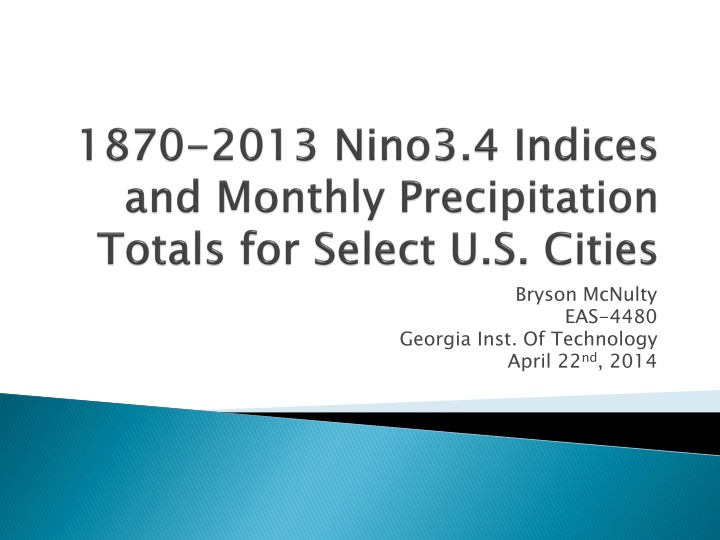
Understanding ENSO and U.S. Precipitation Patterns
This research project delves into the impacts of the El Niño Southern Oscillation (ENSO) on U.S. precipitation patterns, focusing on historical data analysis, seasonal variations, and correlation studies between Nino3.4 indices and monthly precipitation records. The study aims to build a comprehensive history of El Niño and La Niña events while exploring the relationship between sea surface temperatures and weather anomalies before and after 1950.
Download Presentation

Please find below an Image/Link to download the presentation.
The content on the website is provided AS IS for your information and personal use only. It may not be sold, licensed, or shared on other websites without obtaining consent from the author. If you encounter any issues during the download, it is possible that the publisher has removed the file from their server.
You are allowed to download the files provided on this website for personal or commercial use, subject to the condition that they are used lawfully. All files are the property of their respective owners.
The content on the website is provided AS IS for your information and personal use only. It may not be sold, licensed, or shared on other websites without obtaining consent from the author.
E N D
Presentation Transcript
Bryson McNulty EAS-4480 Georgia Inst. Of Technology April 22nd, 2014
Intro: ENSO and the Effects on U.S. Precipitation Project Goals and Tests to Perform Processing the Data for Comparison Nino3.4 Indices Before and After 1950 Total Monthly Precipitation Data From Multiple Stations Within a City City by City Comparison to the Nino3.4 Indices Discussion and Future Work
El Nino Southern Oscillation Anomalies in the SST and Circulations at the Equatorial Pacific Warm SST Anomalies = El Nino Cold SST Anomalies = La Nina Mean SST in the Nino3.4 Box Defines Index Good for Mature El Nino and La Nina Events Image Source: http://www.cpc.ncep.noaa.gov/prod ucts/analysis_monitoring/ensostuff/ nino_regions.shtml
Seasonal Variations Wet Coasts in Winter Dry Northwest in Fall Dry Midwest in Spring and Winter Focus on Locations That see Strong Anomalies Positive or Negative Image Source: http://www.cpc.ncep.noaa.gov/produc ts/precip/CWlink/ENSO/composites/
Image Source: http://www.cpc.ncep.noaa.gov/products/precip/CWlink/ENSO/composites/
Build a El Nino and La Nina Event History Without Global SST Trend Influence or Monthly Variation Noise Linearly Detrend and use a 3-Month Smoothing From Literature Combine Station Data for Overlapping Times and Calculate the 95% Confidence Interval at Each Time Test the Correlation Between the Nino3.4 Index and the Total Monthly Precipitation at Each City P must be < 0.05 for Significance
Most Robust Data from 1950-Present SST Observations More Frequent After 1950 Models of SST Allow for Pre-1950 Data From Scarce Observations HadISST (Hadley Centre Sea Ice and Sea Surface Temperature) data set 1870 to 2013 Monthly Nino3.4 Data
National Climatic Data Center (NCDC) Data Included all Stations Within a City s Radius Cover the Time Frame Data to Compare Each Month Higher Confidence Selected 3 U.S. Cities Chicago, IL Jacksonville, FL Seattle, WA Image Source: http://www.ncdc.noaa.gov/
R = .2149 P = ~1.2E-16
R = 0.1908 P = ~1.9E-15
A Little Positive Correlation (0<r<0.3) between 3-Month Smoothed Data With Entire Year This was Significant for Both Jacksonville and Chicago Seasonal Cancelling (wet winter, dry summer, positive Nino3.4, etc.) Needs to be Considered Time Gaps in Station Data Increase 95% Confidence Interval Range/Size Chicago has the Best Coverage in This Respect Missing Data for Seattle Make Calculations Difficult Comparison of La Nina and El Nino Events Defined by my Calculations to Literature Require More Research
Use Nino3.4 El Nino and La Nina Distinctions to Compare only Stronger Events Use Only JFM Months for Strong Events Compare Different Station/City Data Sets New Locations (Los Angeles, Atlanta, etc.) New Data Types (Temperatures, Max Temperatures, etc.) New Data Time Frames (Daily and Yearly) Periodicity and Lag Autocorrelation Tests
http://www.cpc.ncep.noaa.gov/products/analysis _monitoring/ensostuff/nino_regions.shtml http://www.cpc.ncep.noaa.gov/products/precip/ CWlink/MJO/enso.shtml http://www.esrl.noaa.gov/psd/gcos_wgsp/Times eries/Data/nino34.long.data http://www.metoffice.gov.uk/hadobs/hadisst/ http://www.ncdc.noaa.gov/

